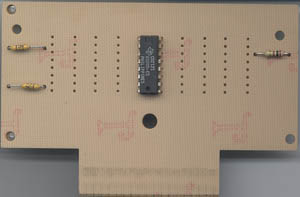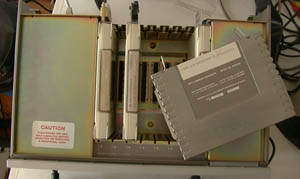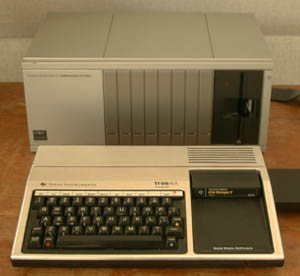
The TI99/4A was the only 16 bit computer for the home market in 1980, the time it was launched. The data bus is 16 bits wide, but only the CPU RAM (256 bytes) and ROM (8 kBytes) supported this. All other peripherials were 8 bits wide. The video processor had 16 kBytes available, which was also used to store BASIC programs. The main processor could access this memory only through a memory mapped port. The computer also contained about 18 kBytes of GROM, special ROM containing the graphics routines written in GPL, a special interpreted graphics language. These GROM devices were only accessible through a memory mapped port. Games were typically GROM based and written in GPL.
The design made the computer very slow in BASIC, and with only 256 bytes RAM, no serious machine code assembly was possible.
game
cartridge
containing
one GROM
chip

The basic TI99/4A was just a games console, with lots of
games available. The BASIC seems to be added to give it some educational
value, which probably helped sales. Few people buy a games console for
their children, but a real computer with BASIC, and a games option,
seemed a good compromise.
The GROMs in the cartridges were propriatairy TI and mandatory in cartridges,
so the manufacturer profited from every game sold.
The typical cartridge contents was very simple, and cheap to produce. Eventually a replacement schema consisting of an standard Eprom and some shift registers was created, so people could create their own cartridges or copy existing ones.
Interface


The disk controller was build around the WD1771 FDC, which supported single density only, the 5 1/4" disk drives were 40 track single sided. So storage capacity was limited to 89 kBytes per disk. Up to three drives could be connected. The newer "Disk Manager 2" cartridge supported double sided drives.

The required extensions for the TI99/4A to work with assembler and disk drives was so expensive, only game developers bought it. There is a clear distinction in the way the components are manufacturered; the console and cartridges are cheap mass products, the peripherial interface and the extension cards in it are build for eternity. They look like high end mini or mainframe components. (Maybe TI reused existing components from their business computer systems for the 99/4A).